WATERS OF LIFE
LIFE UNDERWATER
- VEGETATION
VEGETATION - BIODIVERSITY
![]() FLASH PLAYER IS REQUIRED TO SEE THE CONTENT OF THIS PAGE
FLASH PLAYER IS REQUIRED TO SEE THE CONTENT OF THIS PAGE
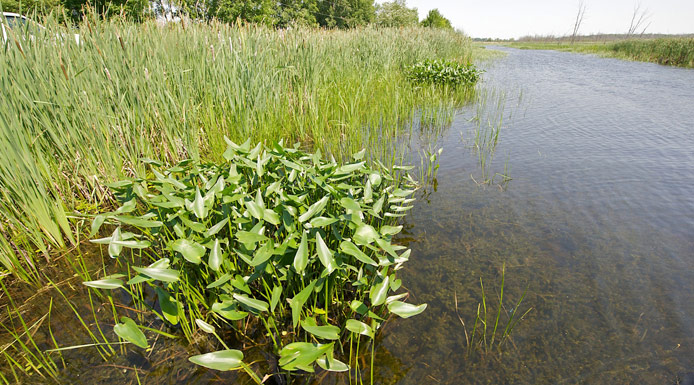
Cordate pickerelweeds and other plants
Aquatic plants fall into two major groups: vascular plants and algae.

Aquatic plants and algae
There is here in the foreground algae and aquatic plants in the background.

Vascular plants, or macrophytes, have roots that attach them to the sediments. Their leaves grow upwards through the water column. Fluid circulates through these plants in small vessels. Submerged vascular plants grow entirely underwater.

Emergent vascular plants are often found near the shores.

Arrowheads
Some of their leaves grow underwater, while others grow above the water line. Their roots are anchored in the sediments.

Algae, or phytoplankton, are nonvascular plants.
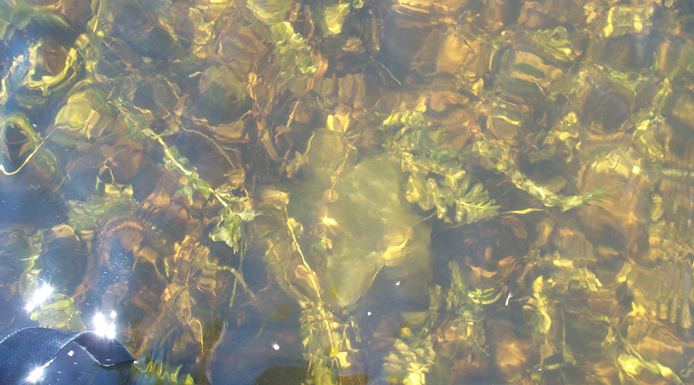
Many types of algae are of microscopic size. Others become visible when they gather in colonies, which can measure several metres across.
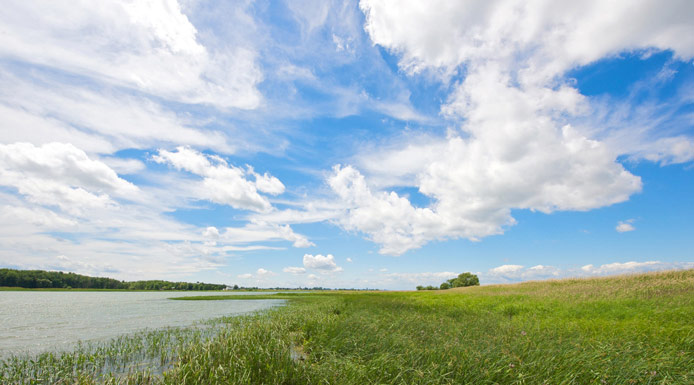
Because of its significant biomass, vegetation plays an important role in ecosystem dynamics.
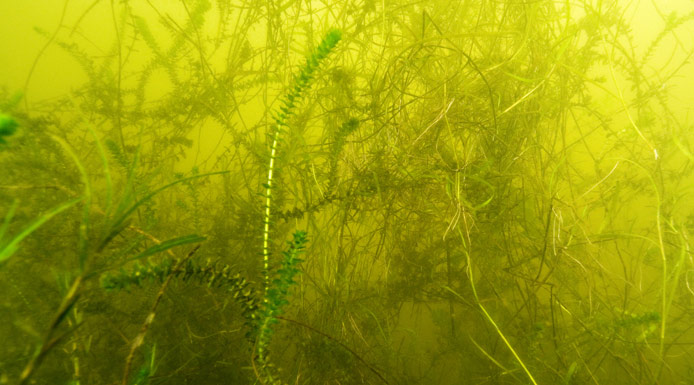
Submerged plants affect water flow patterns, the amount of time water takes to flow through the lake, the habitats of organisms living in the lake, water clarity and the fate of nutrients such as nitrogen and phosphorus.

Submerged plants come in a wide variety of shapes and species.

1 - Canopy-forming submerged plants
These plants grow rapidly to the surface of the water. Most of their biomass is concentrated near the surface. When they grow to cover large areas, they can interfere with fishing, navigation and swimming.
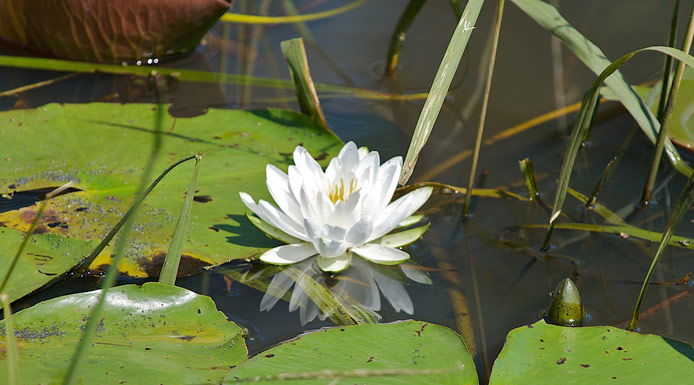
Water-lily
The white water-lily flower is easily detected in the wetlands.
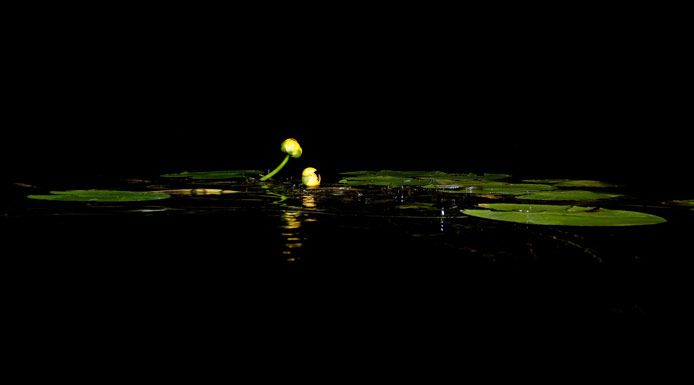
Pond-lily
The pond-lily is distinct from the water-lily in shape and color of the flower.

Pond-lily
The flower of the pond-lily looks like a ball of bright yellow.
VIDEO - 0 min 10 s
This video shows small leaves of common duckweed floating on the surface of the pond.

American tape-grass
2 - Submerged plants growing within the water column
These plants grow to a certain height within the water column. Their biomass is uniformly distributed.

American tape-grass and Canada waterweed
Thick growths of these plants can change water flow patterns and hamper navigation.
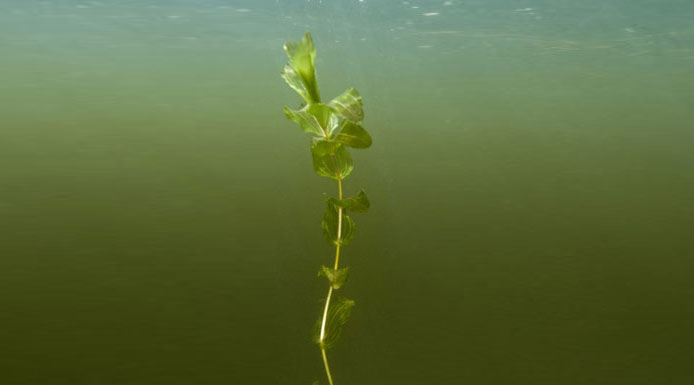
Richardson’s pondweed
3 - Bottom-growing submerged plants
The biomass of these plants is concentrated near the lake bottom.
This page contains videos that require Javascript and Adobe Flash Player to be activated. If you wish not to activate these functions, we offer pictures from the original videos.

VIDEO - 0 min 10 s
Bladderworts are carnivorous plants that grow many tiny sacks on their branching stems. The sacks act as traps that suck in small invertebrates.
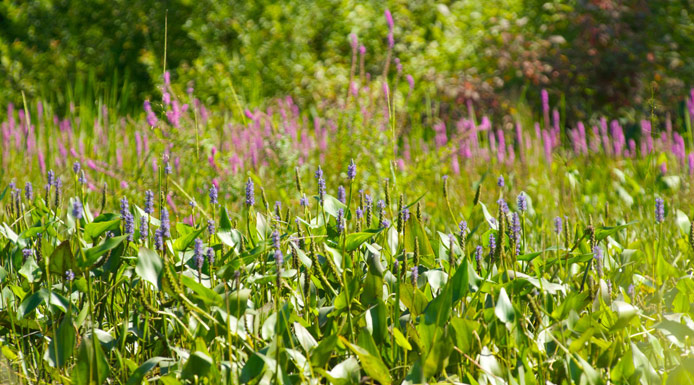
Cordate pickerelweed and purple loosestrife
Emergent plants grow in shallow water near the shore.

Yellow iris
The yellow flowers of the iris illuminates the marsh.
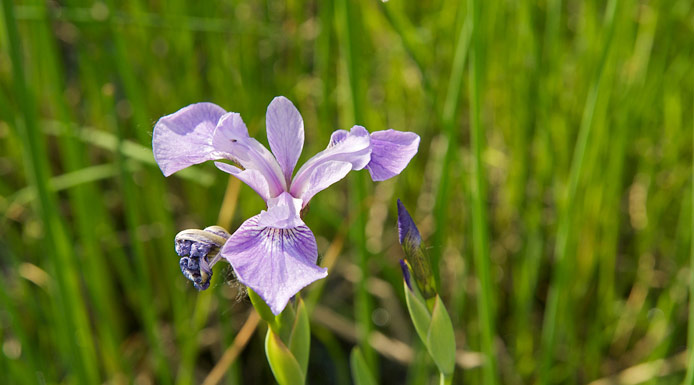
Blue flag iris
The purple flowers of blue flag iris offer silky reflections.
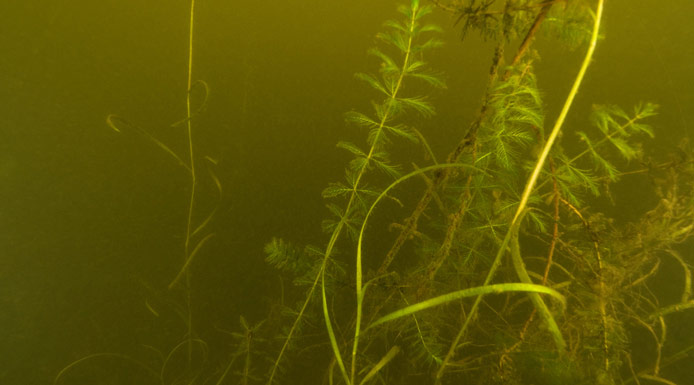
Eurasian water-milfoil
Some species of plants have been introduced to the Lake Saint-Pierre area.

Flowering rush
These highly competitive exotic species invade the environment and gradually replace native species.

European frogbit
Eurasian water-milfoil, flowering rush and European frogbit are three exotic species frequently seen in Lake Saint-Pierre.

European frogbit
The leaves of European frogbit resemble those of water lilies but they are smaller.

European water chestnut
European water chestnuts are another threat to the ecosystem of Lake Saint-Pierre. They can already be found upstream in the Richelieu River. Lower water levels could help this invasive plant become established in Lake Saint-Pierre. It has already damaged many water courses in Quebec and in the Hudson River near New York City.

European water chestnut
Water chestnut leaves rapidly cover the entire surface of a water body, greatly reducing light penetration.
The decrease in light leads to a decline in other aquatic plants.

Cattails
Emergent plants are rooted in shallow waters. The majority of the plant grows above the water line.

Wide expanses of emergent plants provide habitat for numerous fish, birds, amphibians and aquatic invertebrates.

The strong wind sweep the aquatic plants.

Great Blue Heron
The Great Blue Heron stands in the marsh for fishing.
